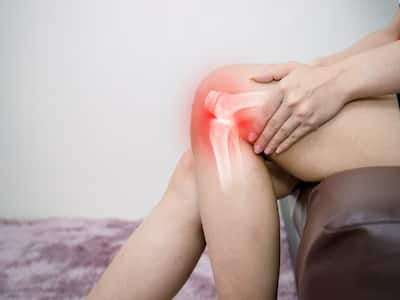
Several factors can contribute to the development of bursitis, and these causes are often related to inflammation.
Bursitis is a common condition characterised by the inflammation of the bursae, small fluid-filled sacs that act as cushions between bones, tendons, muscles, and skin. Inflammation plays a crucial role in the development and progression of bursitis, contributing to its symptoms and clinical manifestations. Understanding the mechanisms underlying inflammation in bursitis is essential for effective management and treatment of this condition.
In this article, Dr. Pavan Kumar Chebbi, Joint Replacement Surgeon, Orthopedic surgeon, Apollo Spectra Hopsital, Bangalore, decodes the role of inflammation in bursitis.
Symptoms of Bursitis
Bursitis commonly presents with specific symptoms, although they may vary depending on the affected bursa. The most common symptoms associated with bursitis include:
- Pain: Persistent or intermittent pain localised around the affected joint or bursa. The pain may worsen with movement or pressure.
- Swelling: Visible swelling or tenderness in the affected area due to the accumulation of fluid within the bursa.
- Limited Range of Motion: Difficulty or discomfort in moving the affected joint due to pain and swelling.
- Redness and Warmth: In some cases, the skin over the affected bursa may appear red and feel warm to the touch.
- Loss of Function: Bursitis can interfere with normal activities and hinder the affected individual’s ability to perform specific movements.
Causes of Bursitis
Several factors can contribute to the development of bursitis, and these causes are often related to inflammation. The following are common causes and contributing factors associated with bursitis:
READ RELATED: Your Diet may be the Reason You're Not Sleeping Well
- Repetitive Motions: Engaging in repetitive motions or activities that place excessive stress on the bursae can lead to chronic irritation and inflammation.
- Trauma: Direct injury or trauma, such as a fall or blow to the joint, can damage the bursae and trigger an inflammatory response.
- Infection: Bacterial, viral, or fungal infections can lead to infectious bursitis, characterized by severe inflammation and localised symptoms.
- Rheumatic Conditions: Certain rheumatic conditions, such as rheumatoid arthritis or gout, can predispose individuals to develop bursitis due to chronic inflammation in the joints.
- Ageing: As we age, the bursae may become less elastic and more prone to inflammation, increasing the risk of bursitis.
Role of Inflammation in Bursitis
The inflammatory response in bursitis involves a complex interplay between immune cells, chemical mediators, and tissues within the affected bursa. The following mechanisms are key to understanding the role of inflammation in bursitis:
- Initiation: The initial trigger, such as repetitive motion or trauma, activates immune cells and stimulates the release of pro-inflammatory mediators.
- Vascular Changes: In response to inflammation, blood vessels near the affected bursa dilate, increasing blood flow to the area. This results in redness, warmth, and swelling.
- Immune Cell Recruitment: Various immune cells, including neutrophils and macrophages, are attracted to the site of inflammation. They release additional pro-inflammatory substances and enzymes that contribute to tissue damage and pain.
- Cytokine Release: Cytokines, signalling molecules secreted by immune cells, play a vital role in amplifying the inflammatory response. They attract more immune cells, promote blood vessel leakage, and induce pain signalling.
- Tissue Damage and Repair: Prolonged inflammation can lead to tissue damage within the bursa. In response, the body initiates a repair process involving fibroblasts and collagen deposition, which can contribute to the formation of scar tissue and prolonged symptoms.
Management of Bursitis
The management of bursitis aims to alleviate symptoms, reduce inflammation, and promote healing. The following strategies are commonly employed:
- Rest and Immobilisation: Reducing or avoiding activities that exacerbate symptoms allows the affected bursa to rest and heal. Immobilisation with splints, braces, or slings may be recommended for severe cases.
- Ice and Heat Therapy: Applying ice packs in the early stages of bursitis can help reduce inflammation and pain. Heat therapy, such as warm compresses, may be beneficial during the later stages to promote blood flow and relaxation.
- Medications: Nonsteroidal anti-inflammatory drugs (NSAIDs) can help relieve pain and reduce inflammation. In some cases, corticosteroid injections may be administered directly into the affected bursa to provide more targeted and potent anti-inflammatory effects.
- Physical Therapy: Specific exercises and stretching techniques can improve joint mobility, strengthen surrounding muscles, and prevent recurrence.
- Lifestyle Modifications: Adjusting ergonomic factors, such as correcting posture or using cushioning pads, can reduce pressure on the affected bursa. Weight management and avoiding repetitive activities may also be beneficial.
- Invasive Procedures: In rare and severe cases that do not respond to conservative treatments, surgical intervention to remove or repair the affected bursa may be considered.
Conclusion
Inflammation plays a pivotal role in the pathogenesis and progression of bursitis. Understanding the underlying mechanisms of inflammation in this condition is crucial for its effective management. By recognising the symptoms, identifying the causes, and implementing appropriate treatment strategies, healthcare professionals can provide relief and improve the quality of life for individuals affected by bursitis. Further research into the mechanisms of inflammation in bursitis may lead to the development of targeted therapies and preventive measures in the future.
Total Wellness is now just a click away.
Follow us on
window.addEventListener(‘load’, (event) => {
// $(document).ready(function(){
$(‘#commentbtn’).on(“click”,function(){
(function(d, s, id) { var js, fjs = d.getElementsByTagName(s)[0]; if (d.getElementById(id)) return; js = d.createElement(s); js.id = id; js.src = “//connect.facebook.net/en_US/sdk.js#xfbml=1&version=v2.3”; fjs.parentNode.insertBefore(js, fjs);}(document, ‘script’, ‘facebook-jssdk’));
$(“.cmntbox”).toggle();
});
// });
});








